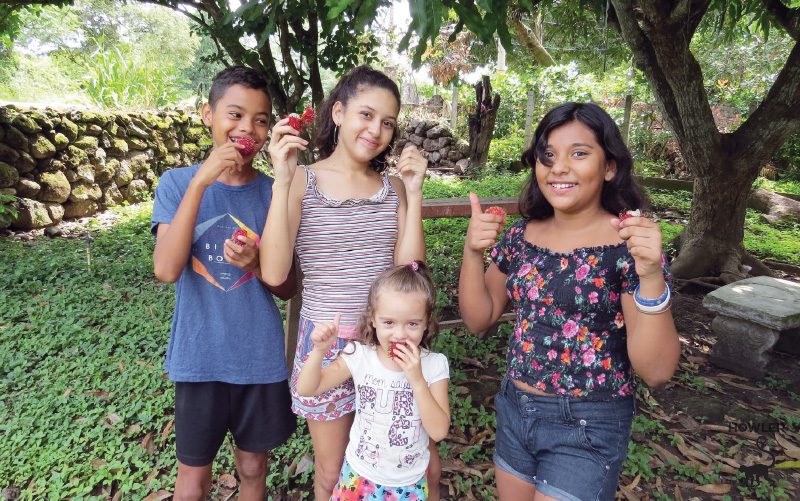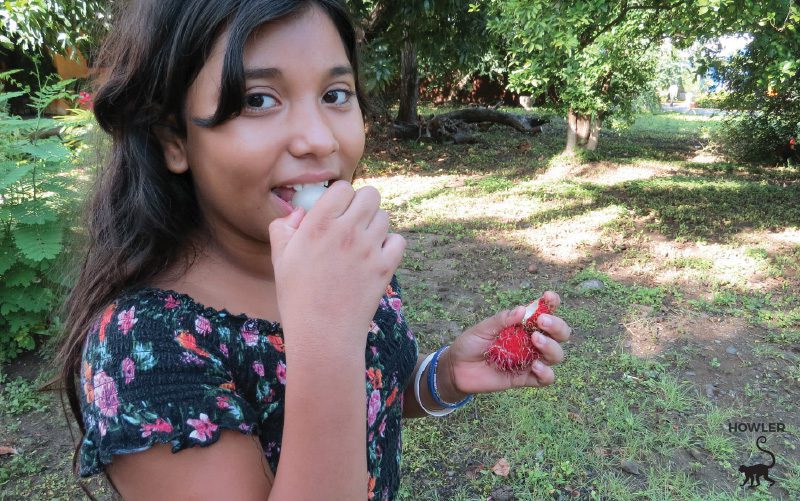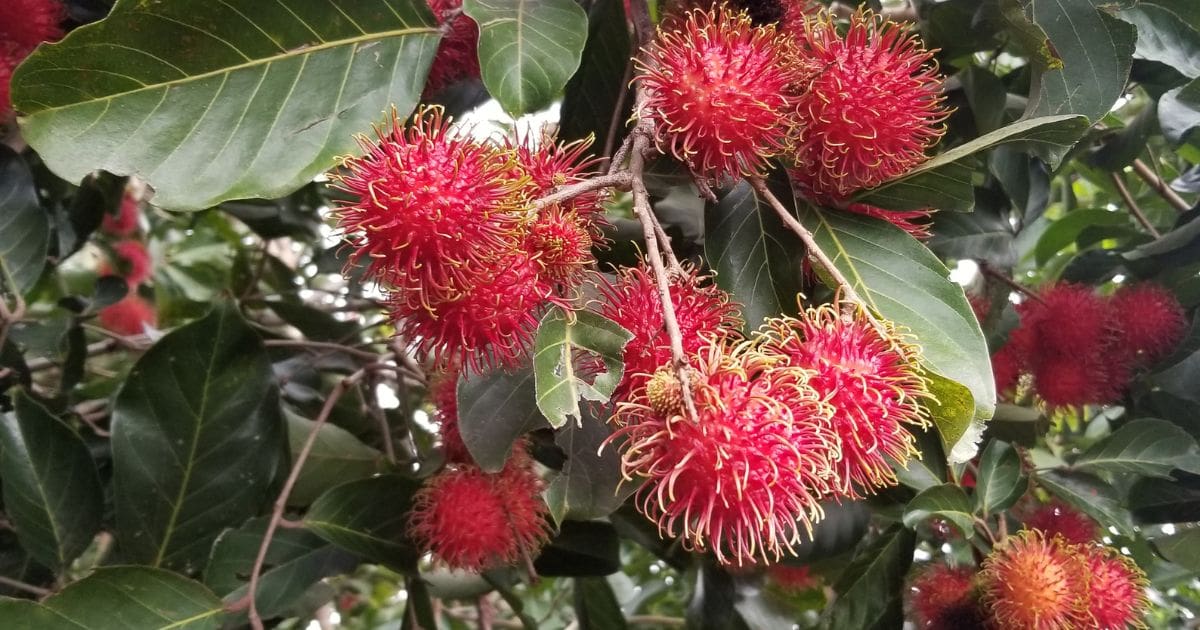Mamón Chino Season in Costa Rica: Stop and enjoy the harvest – they will be gone soon. Known for being bountiful in flora and fauna, Costa Rica is a land where fruits and vegetables seemingly take turns becoming ripe throughout the year. Produce stands throughout the country have a constant turnover of fresh products recently come into season. In Guanacaste, a peak harvest time is August and September.
One of the more handy and colorful fruits to ripen this time of year is the rambutan (Naphelium Lappaceum), which is the name of both the fruit and the tree that bears it. The tree itself is a member of the lychee family. With nicknames being an ingrained part of Costa Rican culture, this colorful and popular fruit is no exception. It is commonly called mamón chino, which translates as “Chinese lollipop.” It’s an appropriate name in that the rambutan is native to Malaysia, brought to South America by the Dutch in the early 18th century and gradually making its way north over the next 200 years.

The rambutan is propagated by rooting the cuttings, or slips, of parent plants. In the Americas, ants and bees are the trees’ most prolific pollinizers. Young trees begin bearing fruit after four or five years, reaching maturity about a decade after planting. In Costa Rica, mamón chino trees grow best in low, coastal areas, below an altitude of 300 meters.
The fruit of the rambutan is covered with a thick, soft, spiky rind that turns a bright scarlet when ripe. In Malaysia, in fact, “rambutan” means “hairy.” Don’t be intimidated by the spiky appearance of this fruit. This skin is easily removed by hand – the “spikes” are soft, not sharp — exposing a gummy, bittersweet off-white flesh covering a dark brown seed. But be forewarned: the flesh is soft and sweet but the seed at the center is very hard.
It is commonly called
mamón chino,
which translates as “Chinese lollipop.”
Superfood attributes
The rind of the rambutan has proven to have effective antioxidant properties. The pulp contains diverse nutrients, all in modest amounts, with the exception of a healthy dose of manganese, copper and vitamin C. Just 100 grams of the pulp provides about 66 percent of our daily vitamin C requirement. The flesh is also used to make a delicious, sweet preserve. The mamón chino seed is high in unsaturated fatty acids and can be boiled to make it edible, although this is not a common practice in Costa Rica. Native Central Americans also used the rambutan tree leaves and bark to make inks and dyes.
Kids love this nutritious food source, perhaps because it almost resembles a toy or candy. They find it easy to peel and enjoy the gummy, semi-gelatinous texture. During peak season, a kilo of rambutan can be purchased at a very reasonable price, making it easy for kids to do what they love most: share with each other.

Golfito garden paradise
Robert Beatham moved to Golfito in 1969, working for the United Fruit Company. He eventually bought his own piece of land which he began cultivating in 1980. This effort evolved into The Paradise Tropical Garden in Rio Claro, just outside Golfito. One of Beatham’s biggest crops is the rambutan, earning him the nickname “The Mamón Chino King of Golfito”. There are several videos on YouTube that do a good job of filming Robert and his gardens, harvesting his mamónes. See this article online at
www.howlermag.com/mamon-chino to link to videos.
The mamón chino is yet another delightful and delicious exotic treat Costa Rica has to offer. Buen provecho!






